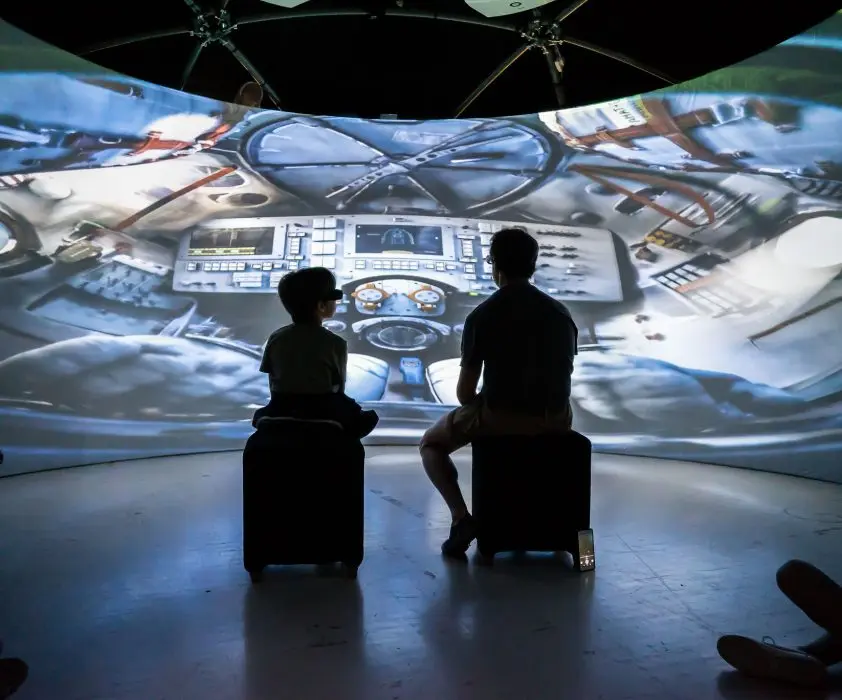
By Martin Pupil, Executive Managing Director
In 1998, B. Joseph Pine II and James H. Gilmore published their article, Welcome to the Experience Economy, in the Harvard Business Review, setting in motion a new way of looking at the delivery of goods and services. “An experience occurs when a company intentionally uses services as the stage, and goods as props, to engage individual customers in a way that creates a memorable event, ” wrote Pine and Gilmore. But with the advances in virtual and augmented reality technologies, experience has evolved to include adjectives that precede it such as immersive and shared.
We had the great opportunity to experience a shared and immersive virtual reality installation at Igloo Vision’s office in Downtown Los Angeles. Mel Ciaravino (MC), Business Development Executive for Igloo Vision, walked us through their technology and answered some pertinent questions for us.
We’ve captured some of the critical questions and answers from our visit with Mel, and be sure to check out the video tour — experiencing is believing!
What is Igloo Vision?
MC: Igloo Vision is the shared VR company. So that means that you can take anything from 360 video to our content design for a headset and put it into a shared immersive space. What defines us is that we’re like a giant VR headset that you can walk into and have a social sharing experience of content. We got our start over twelve years ago in the UK and grew globally to deliver on an international basis with offices in Canada, the UK, Australia as well as here in the US.
What Types of users are leveraging Igloo Vision technology?
MC: We work across industries from education to architecture, engineering, construction to consultancies. We also work in brand activations as well. So about 40 percent of our work is with rentals and activations and then about 60 percent is installs, growing even more in that direction.
We’ve worked with many of the world’s biggest brands like Adidas, Colgate, Ballantine’s, and in real estate, we work with several brokerage firms, owners and developers. Typically, clients use us in a few ways: events, visualization and simulation.
What really differentiates Igloo Vision from its competitors and other virtual reality platforms.
MC: What defines us is the ability to take content and make it social, and our software is at the core of what we are. Its capabilities to bring in content quickly and easily, whether it’s 360 video or interactive VR content or traditional or web-based content. Our clients are thrilled at how easy and efficient it is to bring in new experiences where they don’t have to use us as a middleman every time you want to bring in new content.
How is the technology specifically being used in commercial real estate?
MC: We’re used across a project’s lifecycle from planning phase to construction to sales. In planning, we’re used to present concepts to clients, enabling them to step inside in space yet built—walking through design and safety. In sales, we’re used as part of the marketing suite to give prospective tenants a guided tour of a new space, whether it’s commercial, residential or mixed-use development.

With the rise of the immersive boardroom experience. What are some other areas of growth for Igloo Vision technology?
MC: We’ve had a lot of growth with universities—research labs—as well as library installations. We’re also seeing some growth in hospitals and therapy as well. Then there is the expansion of data analytics that is creating more opportunities to visualize complex data through our platform.
How can customers apply Igloo Vision to enhance the brand experience?
MC: Many of our clients are surprised at the wide array of use cases they eventually find after an installation. So, while they may come to us originally to create that immersive virtual experience, they can also use our technology to provide an interactive board room, video conference or networking event—creating an elevated experience and driving interaction by delivering easy-to-build presentations that engage.
What have been the most impactful or game changing uses that you’ve seen?
MC: The ability to use 3D models in a shared space has made the biggest impact with clients. What is normally a solitary experience and constrained to a single-viewer headset, has now been made social. They can suddenly explore the spatial dynamics of a planned space or location while engaging with team members, making eye contact, reading body language and knowing what everyone else is focused on or what has captured their attention.
How will Igloo Vision continue to be unique and stay ahead of the technological curve as it relates to virtual reality experiences?
MC: Whether it’s an existing tool, or one that’s new on the market, we are continually refreshing and upgrading our technology that our clients have in perpetuity.
